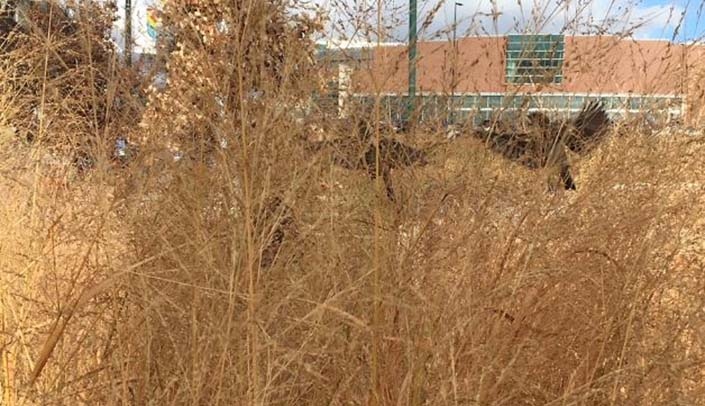With above average temperatures throughout November, winter may be sneaking up on you.
Thinking about cleaning up your yard? Stop right there. Delaying your cleanup until spring helps birds and beneficial insects by providing seeds to eat and an area of shelter. If you need to clean up some of your yard, consider leaving other sections untouched.
If you do clean up, collect seeds and leave those out for birds over the winter. If you have seeds that need to cold stratify (like milkweed), you can plant them now so they will come up in the spring.
Now is a great time to remove turf-grass and have a new place to plant in the spring by sheet mulching.
That process uses leaves, which need to be collected. Did you know leaves can clog storm inlets and sewer pipes causing water in basements? Leaves in local waterways decompose, remove oxygen from the water and change nutrient levels, which can be damaging to plants and wildlife that depend on that water. Farmers are impacted too, with big economic impacts.
So rake them up, use them as mulch in your yard/garden, compost them on site, leave a pile in a corner for birds and insects, or if nothing else dispose of them with yard waste.
This also is a good time to make spring garden plans. While you may be planting spring bulbs, I’d like to recommend planting natives that will benefit early arriving bees. These native bees (not honeybees) need nutrients to get going and count on high-quality nectar and pollen from specific plants to survive. Consider planting native willows, ephemerals and other early bloomers to help them.
Native plants are the most sustainable, as they have survived here for thousands of years and are adapted to water conditions, hot/cold temperatures, pests, and soils. This means easier care for you, no toxic fertilizers or insecticides, and a better plant for wildlife and the environment.
Need help finding the right plant while surviving the cold winter nights? Check out OmahaPlants.org. You can search by various criteria and when viewing a plant you will learn the color of the bloom and stems, when it blooms (vary this to provide for pollinators all season long), what pollinators it attracts (if any), if it’s native, and if it will work in a bioretention/rain garden. The National Wildlife Federation has a native plant finder, too.

Great article! I have practiced delaying some area clean up to leave seeds for birds and help retain snow cover. However, this year I am clearing almost all of my beds as last year I was overrun by voles that ate roots of many plants. The population exploded! So, this year the owls and hawks will feast a little easier.